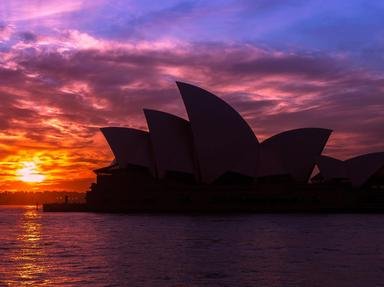Quiz Answer Key and Fun Facts
1. Dorothea McKellar, overseas and a bit homesick, wrote the words that inspired the name for this quiz:
"I Love a Sunburnt Country
A land of sweeping plains
Of ragged mountain ranges
Of droughts and flooding rains"
What is the name of this poem?
2. The Macquarie Dictionary was the first comprehensive dictionary of Australian English. Later than you'd expect, in what year was it first produced?
3. Full of ancient beauty, Arnhem Land is an historical wilderness area of more than 90,000 square kilometres (34749 square miles) in which Australian state or territory?
4. In the early years of the 20th century Reverend John Flynn established the Royal Flying Doctor Service to provide medical assistance to remote areas of Australia's outback.
5. There is a saying in Australia that the country was built on the back of 'what' creature?
6. Who was the longest serving Prime Minister of Australia in the 20th century?
7. With a name that is a homonym of a person in a church setting, which prime minister produced the first national defence scheme for Australia in 1907?
8. Which Australian state (or colony that eventually became a state) never received convicts from England?
9. The Golden Wattle is Australia's national flower, but what plant is the New South Wales floral emblem?
10. In which year did the Federation of Australia take place?
Source: Author
VegemiteKid
This quiz was reviewed by FunTrivia editor
ponycargirl before going online.
Any errors found in FunTrivia content are routinely corrected through our feedback system.

